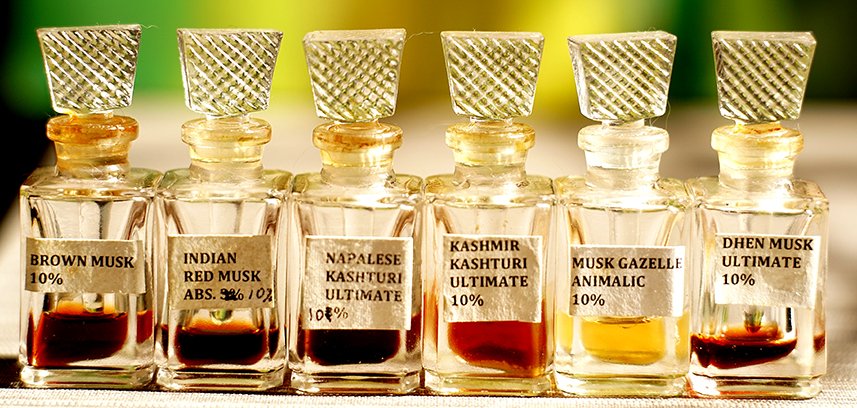The Mysteries of Funk
We are tropical primates and we smell like them.
We each have an odor our own. Some fragrances suppress our smell, others heighten it; the best merge with it and bring about a personal scent, a scent that endures and becomes indelibly associated with whoever chooses to wear it. Such a perfume can be powerfully seductive.
What smells strong to some on their own skin may seem mild on someone else’s. I was amazed when one industry influencer said that my musk wasn’t very animalic when I find it the most animalic musk I know. It is true that fragrances on me become musky while on some people they dry down with the clinical predictability of a blotter strip.
Natural Musks: Brown Musk, Indian Red Musk, Napalese Musk, Kashmir Musk, Gazelle Musk, Tibetan Musk
Of course, our culture contributes to how we respond to odor. When I lived in Paris in the 1970s, the metro stunk of dirty hair. I won’t comment on anything more intimate, but I had two close friends who both worked 12-hour shifts at a dumpy hotel in Châtelet, then known for its whores. Because they worked with the owner for their entire shift, they knew that after two months, she had never taken a shower.
At one time perfumers used natural musk and civet, glorious smelling ingredients that nowadays are considered unethical. Castoreum is an incidental byproduct of beavers killed for fur and most perfumers avoid it. Today, smelly and animalistic ingredients must be disguised. People shouldn’t know that they’re wearing indole, which in the plant kingdom, draws flies. The odors will be there, just not consciously.
But don’t get depressed—there are still a lot of good funky things out there.
Tincture of ambergris, the subtlest of the animal aromas, reminds me of isopropyl alcohol, but one that has been made super complex and beautiful. It is ethical to use because it washes up onto beaches where it is harvested, usually by dogs. It gives perfumes a certain joyous enthusiasm and heightens their aroma.
Beeswax absolute is another natural compound that adds an animal component to a composition. It increases the complexity and richness of artificial musk.
Ambrette seed, while not terribly funky, is musky despite being a plant. Added to funky compositions, it adds another facet.
While most perfumers include little or no oud in their oud perfumes and certainly not as a backup ingredient in other compositions, oud adds funk. Ouds come in many forms, imparting anything from barnyard scents to ethereal almost transcendental aromas. They are almost always sexual stimulants. One perfumer on an online perfume forum (basenotes.net) said that he knew two aphrodisiacs in this world: the smell of Brooklyn Perfume Company’s Oud and the smell of his wife. I recently applied a small patch of oud on the back of my hand and before I noticed, my cat had licked it off.
I experience this erogenous effect, even when oud is used in trace amounts. I perceive the effect not by smell, but by a peculiar vertigo—oud literally makes my head spin.
Perfume should merge with our natural smell. To decide what smells good, try fragrance on your own skin. But be careful, it may bring the beast out in you.


